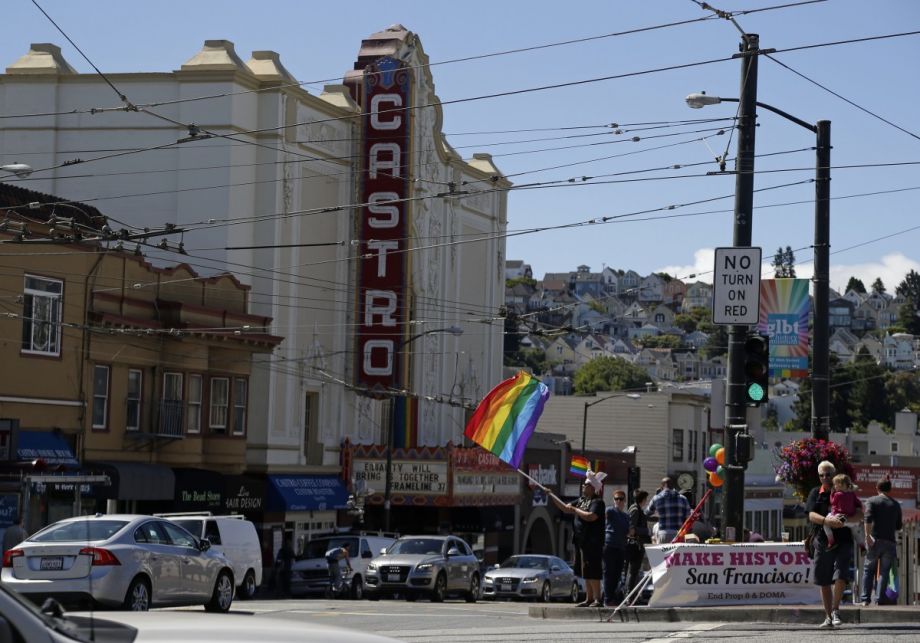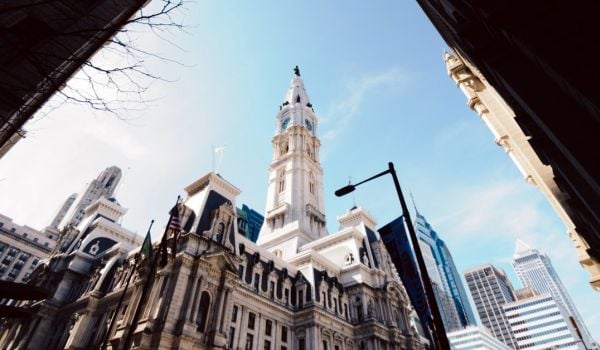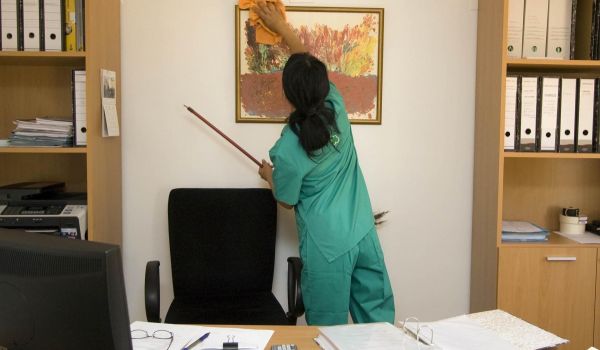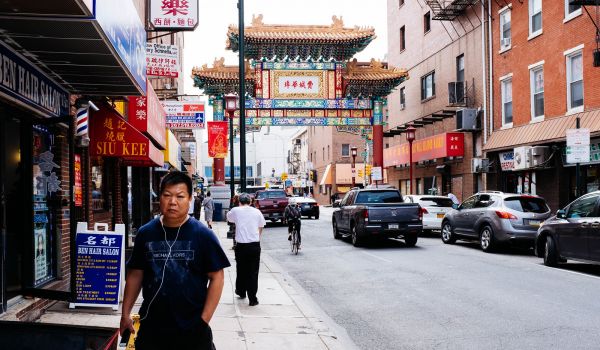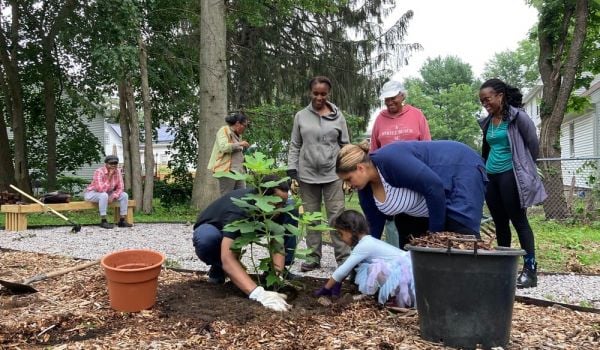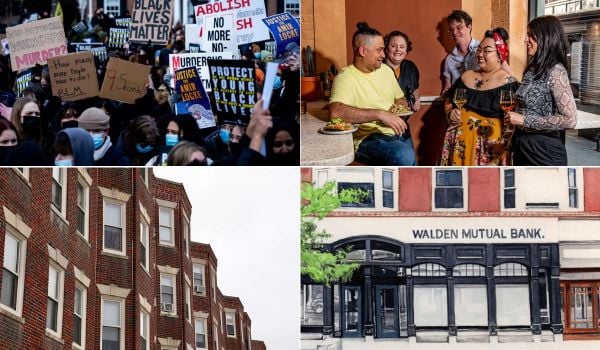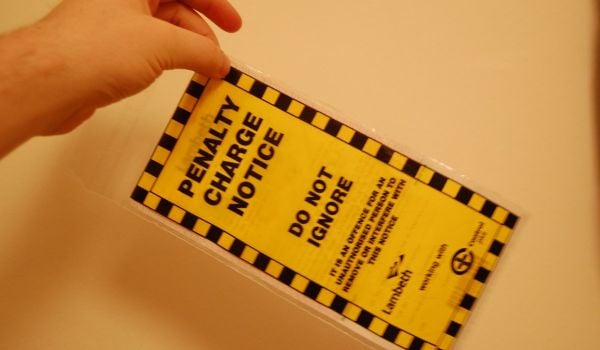In Chicago’s Boystown, a neighborhood famous for its gay nightlife, residents of upscale condos are asking clubs to turn down the volume. In New York’s Greenwich Village, leather and sex shops have been replaced with high-end boutiques and nail salons. And in Philadelphia’s Gayborhood, a former nightclub’s been transformed into a trendy … daycare center? In cities around the country, the geographical hubs of gay culture — so-called “gayborhoods” — are changing. Amin Ghaziani, author of a new book, There Goes the Gayborhood?, says this subtle cultural shift holds enormous significance for the gay community in urban America and beyond.
As a sociologist at the University of British Columbia, Ghaziani has studied how anchor neighborhoods for LGBT life in cities are evolving and, in many cases, becoming “less gay.” Yet while positive social and legal shifts have led to this change (from the Castro to Chelsea), we haven’t quite evolved past the point of needing them. Gayborhoods are still cultural capitals within the bigger, much more anonymous city. They are voting blocks and safe havens.
Take the gay bar. Most of my own gay male friends — from the youngest to the oldest — have at some point used hookup apps to meet other men. Yet as smartphones and sites like OKCupid become the new “meeting place,” we must recognize how influential gay bars have been to the LGBT community. Many protests were first dreamt up in these watering holes, and many solutions to catastrophic events were drafted. In the 1980s, the bars along New York’s Christopher Street were ground zero for the AIDS crisis. The same was true for the bars in San Francisco’s Castro, where gay men and lesbians first banded together to fight a disease that was killing people thought too young to ever die.
A lot of this is in the past now, but the need for LGBT gathering spots, formal or informal, still exists. I recently visited the Christopher Street Pier, a legendary spot that had once been a powerful symbol for gay sexual liberation. Countless gay writers and activists have chronicled the heady days when gay men and transsexuals crowded the rickety waterfront wonderland for sex, companionship and sunning along the Hudson. And while the old graffiti-covered pier, where X-rated antics were commonplace in the ‘70s through the early AIDS era, has been torn down to make room for a cleaner, much more family-friendly Hudson River Park project, to my surprise, it still serves as a gathering place for LGBT youth — mostly black and Latino teens (many transgender) who show up after dark from the five boroughs to meet, dance and be out in ways that may still not be accepted in their own neighborhoods.
“The presence of gayborhoods signals a city’s commitment to diversity, tolerance, inclusion and openness,” Ghaziani notes.
Much like immigrants seeking asylum among fellow immigrants, gayborhoods have created safe places for gay men, lesbians, bisexuals and transgender people to exist openly, albeit within the shadows of the city at large. And while society is much different than it once was in terms of gay acceptance, surely even in a “post-gay” urban world, one in which sexual identity plays a marginal role, one must admit that the playing field isn’t exactly even — yet.
Yes, many gay couples are getting older, marrying, starting families and moving to the ‘burbs — in many ways, the gay urban experience is beginning to mirror the straight one — but what about younger people? Openly gay for the first time, many jump at the chance to lock in an overpriced studio apartment in a gay neighborhood just to be thriving in the mix, to be able to walk the streets unabashedly, something that may have been missing from their own small town existences.
To assume that the world is not heterosexually normative or to assume that there is no longer persisting homophobia would be to ignore the obvious — that even in the most progressive cities in the country, there are still gay bashings, discrimination and efforts to turn back progress. News headlines in gay newspapers (at least the ones that still survive, like The Windy City Times in Chicago) document the violence every day. A desire, therefore, for gay people to be among other gay people in a safe haven is understandable, even if the geographical hubs are evolving to take into account more universal cultural and economic trends, even if they are changing, moving and, yes, even dissipating.
Ghaziani notes that, according to the 2000 and 2010 Census, the number of same-sex couples living in key traditional gayborhoods has declined. Interestingly, as traditional gayborhoods dissolve into melting pots with straights and gays coexisting peacefully, gay-friendly hot spots may spring up elsewhere, a sign perhaps that no matter how far the community and society has come, there still tends to be a want to commingle. For instance, pockets of South Philadelphia along East Passyunk Avenue have become increasingly gay-friendly in recent years. What was once the home to immigrants of Italian and Polish decent has become gentrified with gay-owned eateries and boutiques. The same has happened in Boston. There’s been a noticeable exodus from the city’s South End, once a popular gayborhood, to “Southie,” a traditionally Irish neighborhood where many same-sex couples are settling down and raising families. In Chicago, more gays and lesbians are moving from Boystown to Andersonville, a formerly Swedish neighborhood.
All neighborhoods change. This is true of city life. Modern gayborhoods will undoubtedly continue to evolve to meet the needs of its ever-evolving citizens. But this does not necessarily signal their death knell anytime soon.
“We have no reason to believe homophobia will die,” Ghaziani says. “You can simply ask yourself has racism gone away or has sexism gone away?”
Gay neighborhoods have been crucial to LGBT rights for decades, and have produced important contributions, from politics to poetry to music, art and fashion. “The growing acceptance,” he says, “is extremely positive, but it is important that we continue to find meaningful ways to preserve these culturally important spaces.”
While tomorrow’s gayborhood may bear little resemblance to the territory of the past, ones in which light seldom fell into the shadows, real cities, real communities still offer a place where all gay people can find one another and find themselves — and make a home.

Natalie Hope McDonald is a freelance writer and editor based in Philadelphia. She’s the former editor of G Philly, an LGBT lifestyle magazine, and has contributed to publications around the country, including Newsweek and The Advocate. You can find her at nataliehopemcdonald.com.

